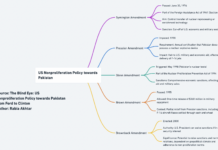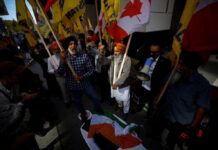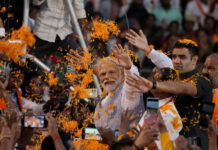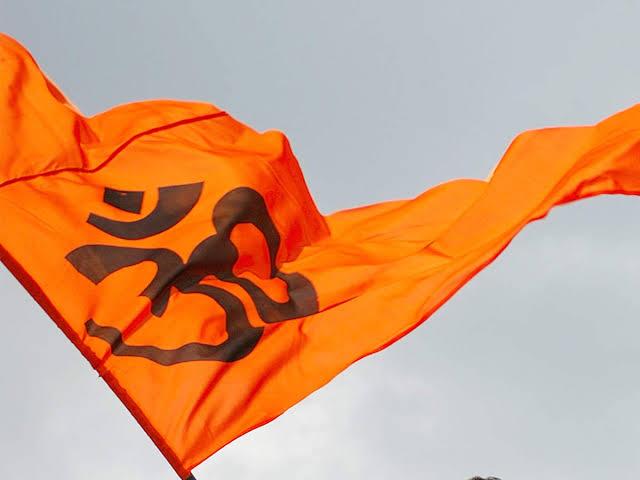Rabia Akhtar
Do ideas or beliefs play a role in state’s maneuvers in the international system? As a realist, I believe that states are inherently rational and are not guided by beliefs. However, after studying BJP’s ascent to power and the rapidly prevalent Hindutva culture, I have doubts that all states are functionally undifferentiated. The dormant constructivist in me surfaces. There certainly are differences that guide the behavior of a particular state in the international system, and these differences are rooted heavily in culture and belief system of the state’s ruling elite. Culture has a strategic impact and its role in shaping the Indian foreign policy especially is largely understudied.
Rita Manchanda, a writer and human rights activist, captures the essence of Rashtriya Swayamsevak Sangh (RSS) philosophy which provides an insight on how BJP will deal with future confrontations. It is important to understand this philosophy since it has a direct bearing on how Modi-Shah BJP is handling its present crisis in Kashmir or will handle any future crisis between India and Pakistan.
The RSS discourse, Rita writes, “denounced as an aberration the Gandhi-Nehru version of Hinduism, which it described as humble and submissive, glorifying the strategy of passive resistance in which a Hindu bends to receive lathi blows. Such a version fostered defeatism, pseudo-secularism and internal divisions as innate Hindu tolerance was interpreted as weakness. For the RSS, Hinduism is militant: every Hindu God is armed. Indeed, the remaking of the figure of Ram as warrior-god is integral to the creation of the hegemonic discourse of the Hindu as militant. It is practically incorporated in the daily military training and exercise of the RSS cadre.” For example, “in building the case for attacking Pakistan, the vocabulary of the street nuclear discourse was couched in crude masculine terms.” For Shiv Sena’s Bal Thackeray [at that time], the tests were a testimony to the manhood of the state where he said, “We have to prove that we are not eunuchs”.
Rita further informs that, “in constructing this discourse of Hindu nationalist orthodoxy, the necessity and inevitability of an Indian security state is contingent on the existence of Pakistan, the enemy without, and its extension within – the Indian Muslim community, suspect for its alleged allegiance to a beyond-Bharat ummah identity, and thus incapable of authentic belonging on the criteria of pimyabhumi and pitrabhumi. The Partition legacy adds to this anxiety. Militarised nationalism, anti-democratic impulses and hate politics are integral aspects of the Indian national security state package, justified by the hostility of its neighbour. The dominant media frame projects an essentialist antagonism between Hindu India and Muslim India as the raison d’etre for militarised nationalism.”

The Hindutva ideology is exclusionary in its approach and discriminatory in nature. It aims to restore Hindu pride, projects Hindu nationalism, and is fascist in spirit. On behalf of the entire Indian nation, RSS driven by the Hindutva ideology gets to decide who belongs in India and who does not. M.S. Golwalkar, the Supreme Leader of RSS, in 1939 gave the blueprint of how India should deal with the ‘foreign races’ [non-Hindus]. He said, “the foreign races in Hindusthan must either adopt the Hindu culture and language, must learn to respect and hold in reverence Hindu religion, must entertain no idea but those of the glorification of the Hindu race and culture, i.e., of the Hindu nation and must loose their separate existence to merge in the Hindu race, or may stay in the country, wholly subordinated to the Hindu Nation, claiming nothing, deserving no privileges, far less any preferential treatment — not even citizen’s rights. There is, at least, should be, no other course for them to adopt. We are an old nation; let us deal, as old nations ought to and do deal, with the foreign races, who have chosen to live in our country.”
BJP has in the past twenty-five years lived and will for the next twenty-five years, live these words as homage to Golwalkar to complete the saffronization of India project. Annexation of J&K, with deoperationalization of Article 370 and 35A is a step in the same direction.
Variance in Indian Power Projection vis. China & Pakistan
The last shots fired at the Line of Actual Control (LAC), the de-facto boundary between India and China was in 1967 at Nathu La. However, since then there have been several incursions along the LAC bringing the Indian and Chinese forces in a face-off. By mid-1970s, both China and India increased military patrols along the LAC reinforced by enhancing infrastructures as means of asserting control over their respective claims on the disputed boundary. The Indian ‘exceptionalism’ that Hindutva ideology seeks to project, does not sit well with either Pakistan or China. There is a difference in the Indian approach of its treatment of Pakistan as opposed to China whereby much aggressive posturing takes place with the former as compared to the latter. India’s perception of its ‘enemy’ is directly proportional to the power potential it assigns to that state. And in this case, obviously it cannot threaten China and treat its provocations the same way it treats or threatens Pakistan, which, it considers a Nuclear Dalit, whose boundaries it keeps disrespecting.
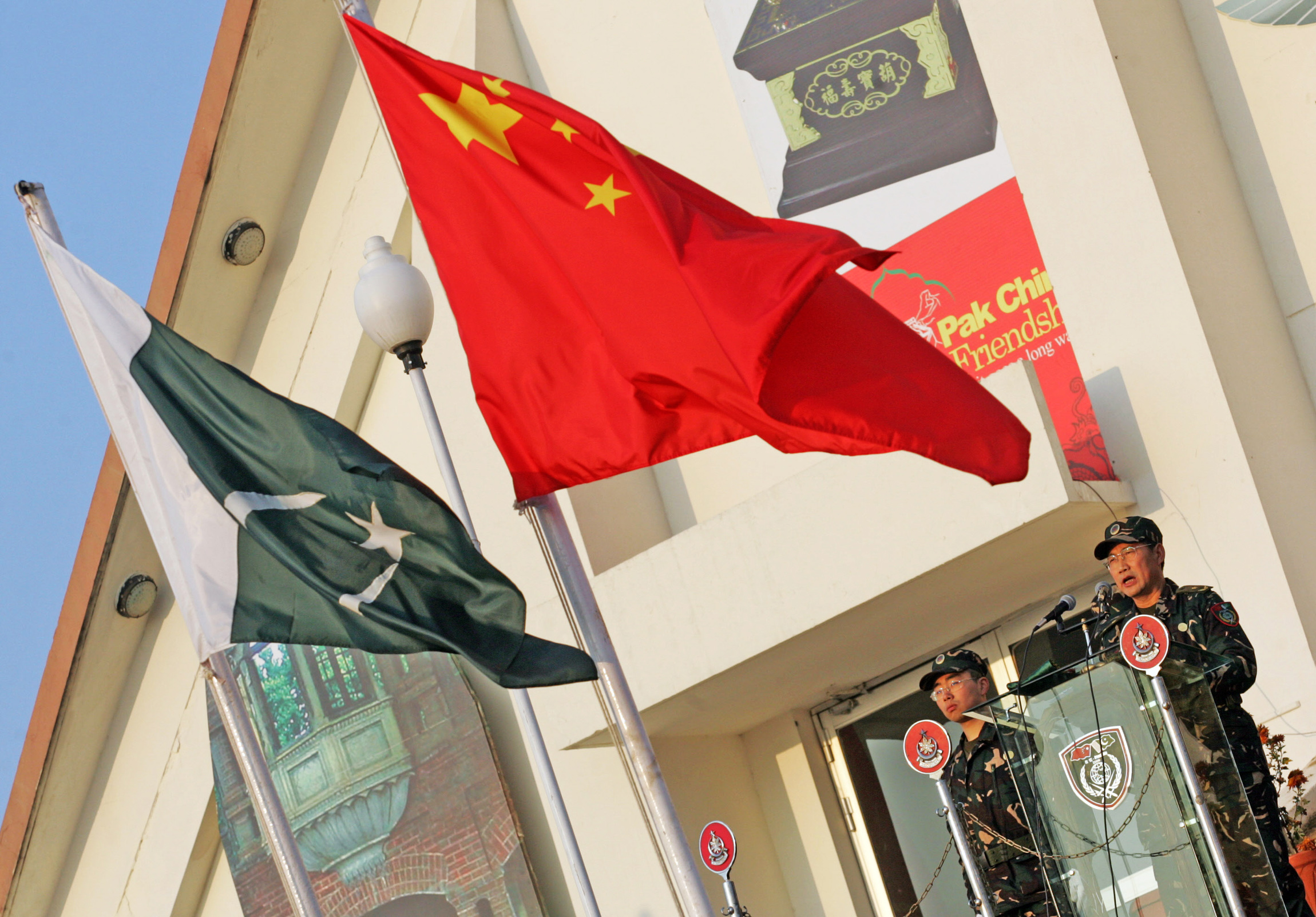
There is a gradual dilution of the grand Indian ‘strategic restraint’ pushing the limits to challenge Pakistan’s redlines and provoke a response. The phantom surgical strikes post Uri, the Balakot strikes earlier this year and provocations about gaining jurisdiction over AJK as per the recent statements by the Indian Defence Minister and later by the Indian Minister of External Affairs, are all indicators of India finally shedding its strategic pacifism. It is also increasingly becoming a ‘revisionist’ state, shedding the impressions of a status quo power.
Pakistan and China need to be ready to deal with an assertive India bordering on arrogance which the militant Hindutva ideology affords its current ruling political elite. The perception of militant Hinduism and militarized nationalism reinforced through false media projections about the kind of power India is or has the potential to become, portends dangerous times ahead in South Asia.
It is not too farfetched a thought that next time India might consider mimicking what China did to India in 1962, destroy Pakistan’s posts across the LOC, capture some part of its territory across the LOC and then do a unilateral ceasefire, just short of Pakistan exploring its retaliatory options. Would Pakistan settle with giving up those posts or would it escalate and not settle with India seizing its territory across the LOC? The fear of escalation at the LOC is real. Literature on Indo-Pak limited war options and every war game or simulation exercise would tell you that limited war might not remain limited. What steps can Pakistan take to limit the chances of limited war with the potential of escalation to an all-out war with India over Kashmir? Simply put: involve China.
After the joint statement made by China and Pakistan on IOJ&K during the visit of Chinese Foreign Minister Wang Yi to Islamabad last month, the Indian External Affairs Ministry spokesperson rejected the duo’s reference to J&K calling both countries to stop CPEC related projects in AJK and GB. Coupled with the official Indian pronouncements of attacking AJK and gaining jurisdiction over it, Pakistan and China should work together to thwart any Indian attempts to disrupt CPEC projects in AJK. Pakistan could approach China to explore an agreement whereby they jointly patrol the LOC in sectors that are vulnerable to Indian intrusions and where Indian sabotage of CPEC projects is a certainty. This will not only augment Pakistan’s overall deterrence but will also make India carry out a strategic reassessment of its surgical strikes options across the LOC. After all, killing Chinese soldiers as opposed to Pakistani soldiers will come at a cost India has not known before.
The Shimla Agreement has already been neutralized by the Indian decision of August 5th and Pakistan cannot be unilaterally held accountable to adhere to it. Critics of this Sino-Pakistan joint border patrol proposal might say that bringing foreign troops on a disputed territory is not acceptable. By whom? It will surely complicate things in AJK but a bilateral arrangement between China and Pakistan whereby Pakistan invites China to jointly secure its CPEC investments in AJK is a bilateral arrangement for which both countries do not need approval from anyone. If stationing such joint border forces only in AJK becomes problematic, such an arrangement can be extended to cover CPEC projects in AJK & Balochistan – both are areas where Indian sabotage of CPEC projects is an ongoing reality. This type of an arrangement can be made under the title of Joint CPEC Security Initiatives to include armed drone surveillance coupled with small Chinese border/paramilitary troops presence in AJK and Balochistan.
Extraordinary times call for extraordinary measures. Pakistan is going through extraordinary times facing unprecedented challenges from an India high on Hindutva ideology and driven by militarized nationalism.
Pakistan must think big and out of the box.
Dr.Rabia Akhtar is Editor, Pakistan Politico.



